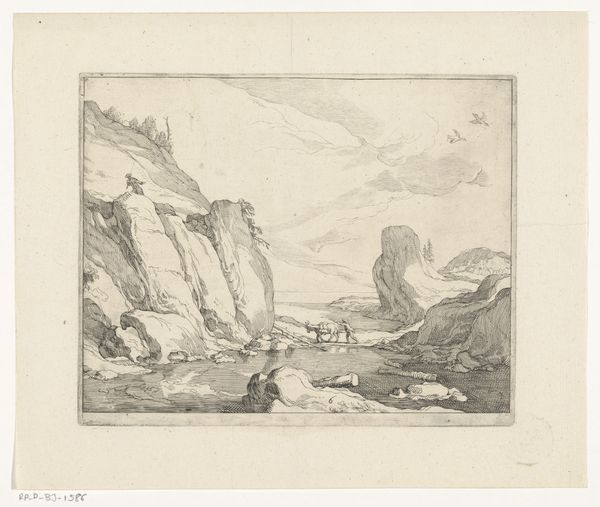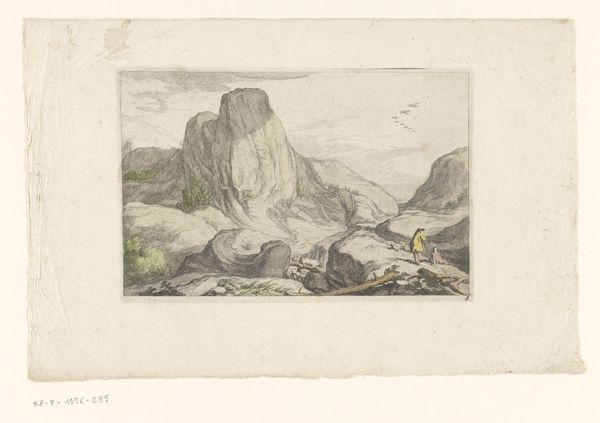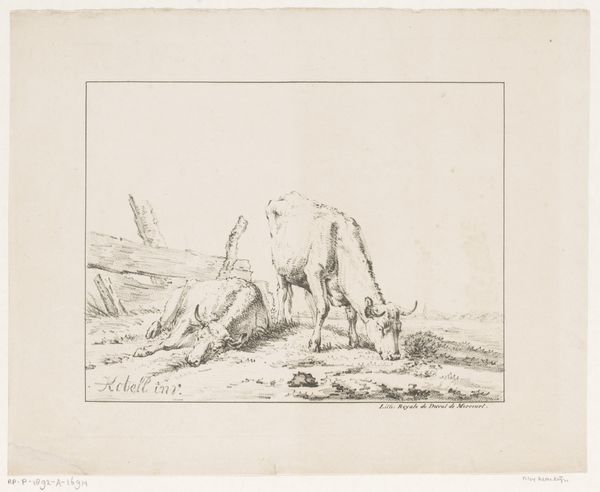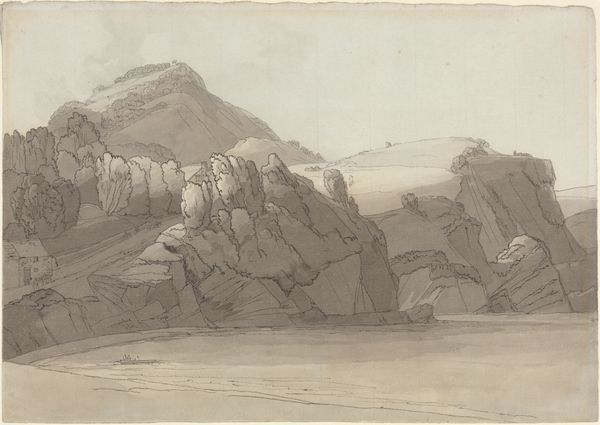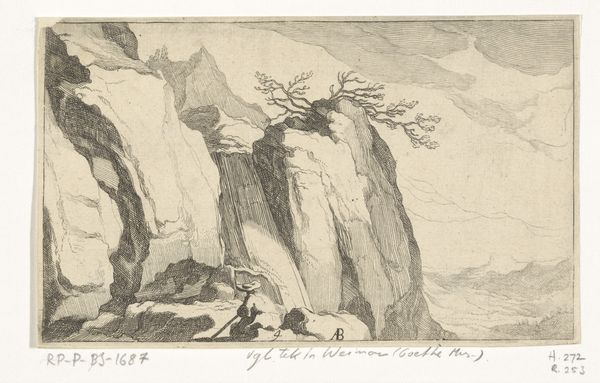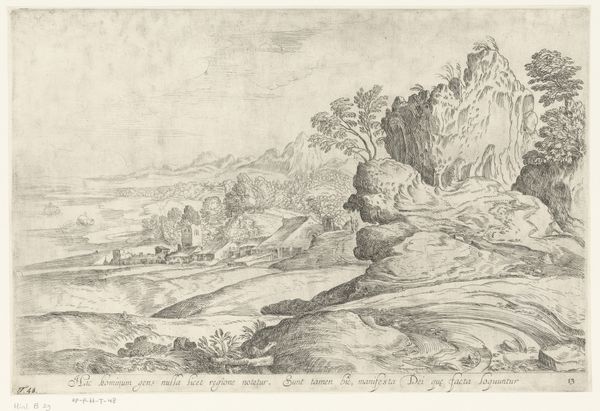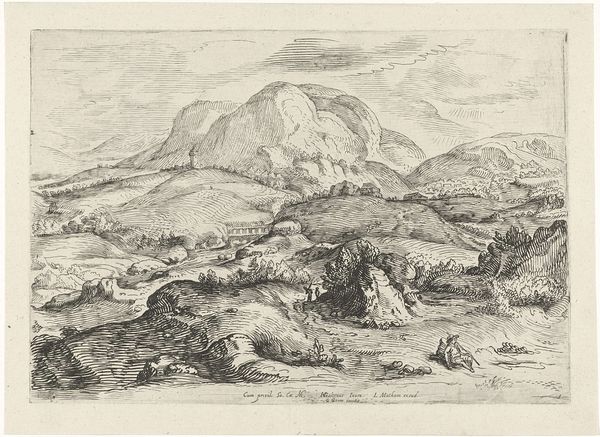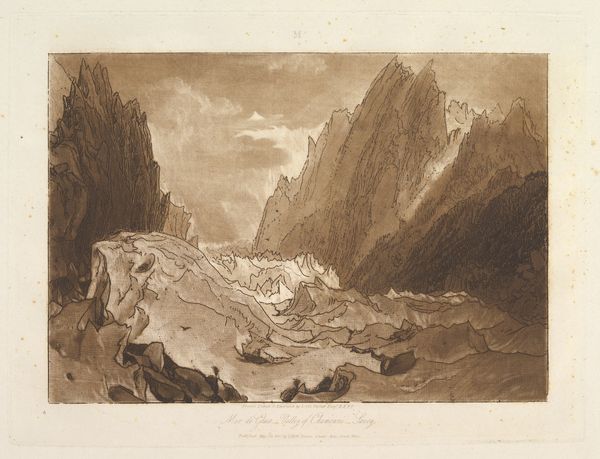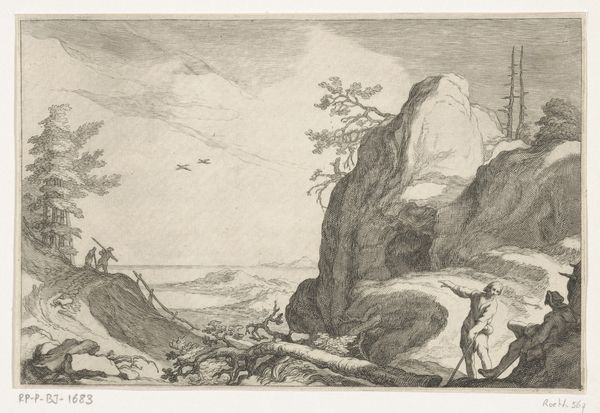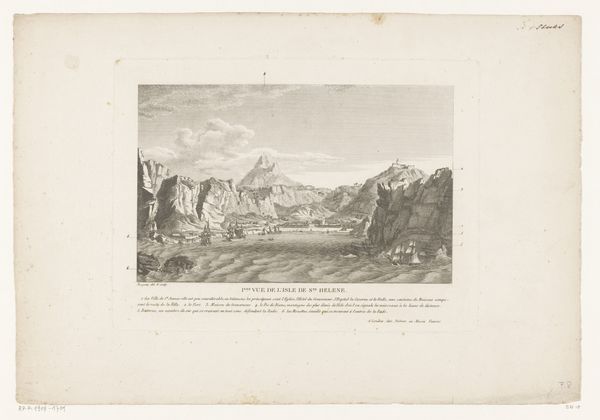
drawing, print, etching, paper
#
drawing
#
baroque
# print
#
etching
#
landscape
#
etching
#
figuration
#
paper
#
form
#
mountain
#
line
Dimensions: height 135 mm, width 205 mm
Copyright: Rijks Museum: Open Domain
Editor: Here we have Frederick Bloemaert's "Rocky Landscape with Two Shepherds," an etching from after 1647, housed in the Rijksmuseum. What strikes me immediately is the composition – the imposing rock formation dominates the scene, yet the figures seem quite small, almost insignificant, don’t you think? What do you see in this piece? Curator: Indeed. The success of this composition hinges on the calculated arrangement of forms. The sheer mass of the central rock is undeniably the focal point, commanding our gaze through its textural complexities and imposing scale relative to the human figure. Note the linear quality of the etched lines, which build a system of shading to communicate form and volume in the rocks, creating a rather strong sense of depth, especially when compared to the birds in the sky. Does the consistency of the shading, though simple, draw your eye to a different form? Editor: I see what you mean! It leads the eye to explore the varying surfaces and their tonal qualities within the landscape itself and then outwards to the sky. However, what is the significance of this contrast, and is that consistent across the foreground? Curator: Precisely. The contrast, in formal terms, underscores the dominance of the natural landscape over humankind, relegating them to the margins of the composition. Notice, however, how the figures are also rendered with careful consideration of light and shadow. This gives their forms and presence volume within the immediate foreground where our viewing begins and introduces an invitation. Are we here with the shepherds? Or apart? This contradiction may add more nuance. Editor: That is intriguing! So, by examining the lines, forms, and their relationship to one another, we are led to reflect on the place of humanity within the grand scheme of nature. It certainly changes how I perceive the work. Curator: Yes. A focus on these inherent qualities grants access into its formal complexity, yielding interpretative depth. It is by a thorough examination of these formal components that meaning is constructed.
Comments
No comments
Be the first to comment and join the conversation on the ultimate creative platform.
